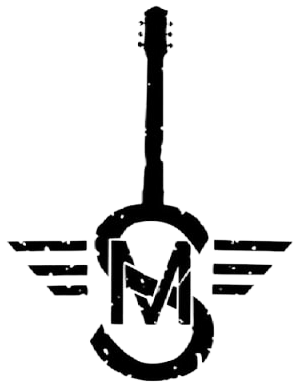What is the function of C-type lectin receptors?
C-type lectin receptors (CLRs) are important pattern recognition receptors involved in recognition and induction of adaptive immunity to pathogens. Certain CLRs play an important role in viral infections as they efficiently interact with viruses.
What cells express C-type lectin receptors?
C-type lectin-like receptors (CLRs) represent a family of transmembrane pattern recognition receptors, expressed primarily by myeloid cells. They recognize not only pathogen moieties for host defense, but also modified self-antigens such as damage-associated molecular patterns released from dead cells.
Are C-type lectins PRRs?
C-type lectin receptors (CLRs) comprise a subfamily of PRRs dedicated to sensing glycans, including those expressed by commensal and pathogenic bacteria.
What is lectin in immunology?
Lectins are glycan-binding proteins that are involved in numerous biological processes including cell development, cell–cell interactions, signaling pathways, and the immune response.
What is RLR in immunology?
RIG-like receptors (retinoic acid-inducible gene-I-like receptors, RLRs) are a type of intracellular pattern recognition receptor involved in the recognition of viruses by the innate immune system.
Where are Fc receptors found?
Fc receptors are found on a number of cells in the immune system including phagocytes like macrophages and monocytes, granulocytes like neutrophils and eosinophils, and lymphocytes of the innate immune system (natural killer cells) or adaptive immune system (e.g., B cells).
Which receptors on host cells participating in innate immunity recognize bacterial proteins?
Which receptors on host cells participating in innate immunity recognize bacterial proteins? Toll-like receptors. -Different Toll-like receptors recognize different bacterial proteins to help aid the immune response. CD47 is a human cell membrane glycoprotein that prevents cell phagocytosis by host immune cells.
Why is it called toll like receptors?
TLRs received their name because of their similarity to the toll protein in serving as the cell surface receptors [44], which play a role in providing the immunity against the fungal and gram-positive bacterial infections [45] together with their role in embryonic development and dorsoventral polarization [35, 46–49]).
What do pattern recognition receptors do?
Pattern Recognition Receptors (PRRs) are proteins capable of recognizing molecules frequently found in pathogens (the so-called Pathogen-Associated Molecular Patterns—PAMPs), or molecules released by damaged cells (the Damage-Associated Molecular Patterns—DAMPs).
What is the primary function of lectins?
Lectins have a role in recognition at the cellular and molecular level and play numerous roles in biological recognition phenomena involving cells, carbohydrates, and proteins. Lectins also mediate attachment and binding of bacteria, viruses, and fungi to their intended targets.
Do lectins cause inflammation?
Because lectins can trigger an immune response, they have been linked to autoimmune inflammatory conditions like inflammatory bowel disease, rheumatoid arthritis, and type 1 diabetes.
What are PAMPs and DAMPs?
PAMPs: pathogen-associated molecular patterns. DAMPs: damage-associated molecular patterns.
Why are Fc receptors important?
Fc receptors, the receptors for the Fc portion of immunoglobulins, play an essential role in antibody-dependent immune responses [1]. Fc receptors are detected on many types of hematopoietic cells including macrophages, neutrophils, dendritic cells, eosinophils, basophils, mast cells, and NK cells [2].
What is the role of Fc receptor?
Specific receptors for antibody, named Fc Receptors are proteins found on the surface of leukocytes. Fc receptors contribute to the protective functions of the immune system, by binding to antibodies that are attached to infected cells or invading pathogens.
Which cellular receptors are essential for triggering innate immune responses?
Pathogen recognition receptors (PRRs) are a class of germ line-encoded receptors that recognize pathogen-associated molecular patterns (PAMPs). The activation of PRRs is crucial for the initiation of innate immunity, which plays a key role in first-line defense until more specific adaptive immunity is developed.
What are the 4 barriers of innate immunity?
Note:Immunity present by birth is called innate immunity, it is of four types; physical, physiological, cellular and cytokine. This type of immunity is not as strong as acquired immunity.
Are TLRs cytokines?
Abstract. Background: The Toll-like receptor (TLR) family is involved in the recognition of and response to microbial infections. These receptors are expressed in leukocytes. TLR stimulation induces the production of proinflammatory cytokines and chemokines.
What do cytokines do?
Cytokines are small proteins that are crucial in controlling the growth and activity of other immune system cells and blood cells. When released, they signal the immune system to do its job. Cytokines affect the growth of all blood cells and other cells that help the body’s immune and inflammation responses.
Which are the three groups of pattern recognition receptors?
The PRRs are divided into four families: Toll-like receptors (TLR) Nucleotide-binding oligomerization domain-like receptors (NLR) C-type lectin receptors (CLR)
How many types of lectins are there?
Lectins are classified primarily into five specificity groups, according to the monosaccharide for which they exhibit the highest affinity: mannose, galactose/N-acetylgalactosamine, N-acetylglucosamine, fucose, and N-acetylneuraminic acid (sugars are of the d-configuration except for fucose which is l).
How does the body get rid of lectins?
How To Reduce Lectins In Your Diet?
- Soaking beans, legumes, and grains overnight before cooking them.
- Peeling the skin and taking out the seeds.
- Fermenting your favorite lectin-containing vegetables as the good bacteria break them down.
What causes lectin sensitivity?
Risk factors that may place you at higher risk for lectin or aquaporin sensitivities include: Frequent use of antibiotics. Following a vegan/vegetarian diet. Leaky gut syndrome.
Are DAMPs cytokines?
Many DAMPs are nuclear or cytosolic proteins with defined intracellular function that are released outside the cell following tissue injury.
How are PAMPs activated to release cytokines?
Mitochondria and NOD-Like Receptor Signaling
Many PAMPs and DAMPs activate cytoplasmic complexes called inflammasomes. After activation, inflammasomes activate the protease caspase-1, which, in turn, cleaves various pro-inflammatory cytokines, leading to their maturation and cellular release.
What is Fc receptor in immunology?
Fc receptors (FcRs) belong to the ITAM-associated receptor family. FcRs control the humoral and innate immunity which are essential for appropriate responses to infections and prevention of chronic inflammation or auto-immune diseases.
